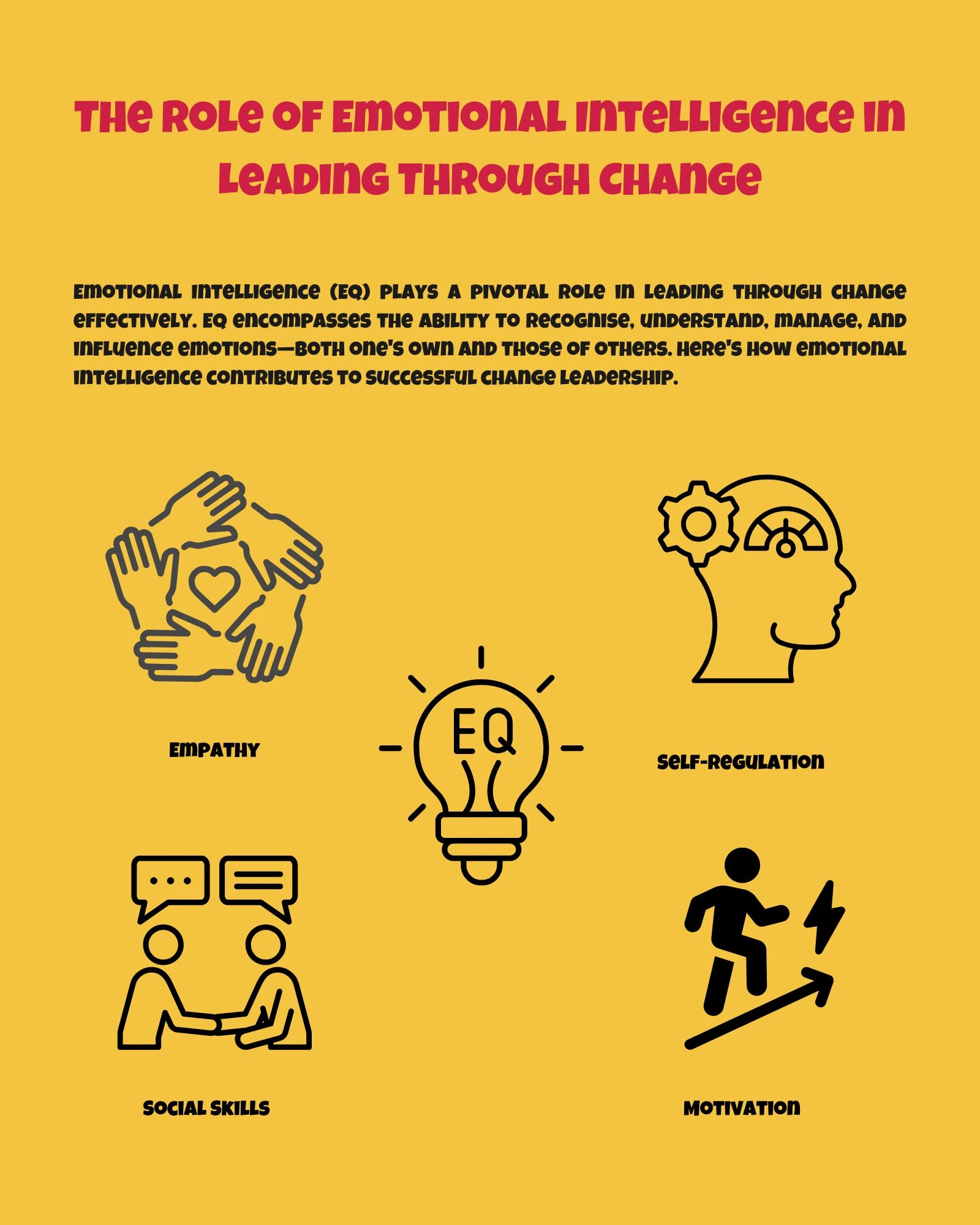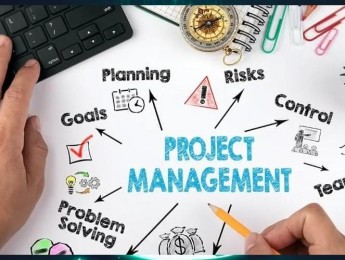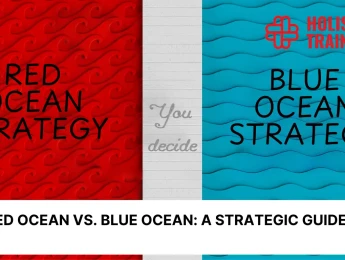- Table of Contents
- Introduction
- What It Means to Lead Through Change
- Visionary Leadership
- Navigating Uncertainty
- Inspiring Motivation
- How to Build Influence Without Authority
- Building Trust
- Effective Communication
- Demonstrating Expertise
- Importance of Leading through Change
- Adapting to a Dynamic Environment
- Driving Innovation and Growth
- Inspiring and Motivating Teams
- Building Resilience
- Enhancing Employee Engagement
- Strengthening Organisational Culture
- 5-Step Framework of Leading through Change
- 1. Communicate the Vision
- 2. Build a Strong Team
- 3. Empower and Support
- 4. Foster a Culture of Adaptability
- 5. Monitor Progress and Celebrate Success
- 6 Tips to Foster Change as a Leader
- 1. Lead by Example
- 2. Communicate Openly and Transparently
- 3. Listen Actively
- 4. Involve and Empower
- 5. Anticipate and Address Resistance
- 6. Celebrate Milestones and Successes
- The Role of Emotional Intelligence in Leading Through Change
- Empathy:
- Self-Regulation:
- Social Skills:
- Motivation:
- Leveraging Technology to Facilitate Change
- Change Management Software:
- Communication Tools:
- Data Analytics:
- Learning Management Systems:
- Social Media and Collaboration Platforms:
- Change Simulation Tools:
- Conclusion
Introduction
Change is an inherent part of life, and in today's fast-paced and dynamic world, it is more prevalent than ever before. Change is inevitable, whether technological advancements, shifting market trends, or organisational transformations. In this context, leadership takes on a whole new dimension. Leading through change requires unique skills and attributes that enable leaders to navigate uncertainty, inspire others, and drive meaningful progress. In this extensive blog post, we will explore the significance of leading through change, understand what it means to lead through change, discover how to build influence without authority, delve into the importance of leading through change, outline a practical 5-step framework for leading through change, and provide six valuable tips to foster change as a leader.
What It Means to Lead Through Change
Leading through change goes beyond managing day-to-day operations and traditional leadership responsibilities. It entails guiding individuals, teams, and organisations through the complexities and challenges that arise during transition periods. Leading through change is about having the vision to anticipate the need for change, the ability to inspire and motivate others, and the skills to navigate uncertainty and ambiguity.
Visionary Leadership
Visionary leadership is at the heart of leading through change. It involves the capacity to foresee the need for change and chart a course for the future. Effective leaders adapt to change and embrace it as an opportunity for growth and improvement. They inspire confidence by communicating a compelling vision and mobilising others to work towards it.
Navigating Uncertainty
Change is often accompanied by uncertainty and ambiguity. Leaders must possess the skills to guide their teams through these challenging times. This includes making informed decisions without complete information, maintaining a sense of direction, and reassuring those they lead.
Inspiring Motivation
Change can be unsettling for individuals and teams. Effective leaders understand the emotional impact of change and provide the necessary support to maintain high motivation levels. They create a sense of purpose and belonging, making team members feel valued and aligned with the organisation's goals.
How to Build Influence Without Authority
One of the fundamental challenges of leading through change is that leaders may not always have formal authority over those they seek to influence. To overcome this hurdle, leaders must build influence based on trust, credibility, and expertise. Building relationships, fostering open communication, and actively listening to others are key to establishing influence. By understanding the needs and concerns of team members, leaders can gain their support and commitment, even without formal authority.
Building Trust
Trust is the foundation of influence. Leaders can build trust by consistently delivering on promises, being transparent, and demonstrating integrity. Trustworthiness enhances a leader's ability to persuade and motivate others to embrace change.
Effective Communication
Communication is a cornerstone of influence. Leaders must communicate clearly and regularly, ensuring that team members are well-informed about the reasons for change, the expected outcomes, and their role in the process. Open and honest communication fosters trust and buy-in from the team.
Demonstrating Expertise
Leaders can establish credibility by demonstrating expertise in their field. This includes staying up-to-date with industry trends, providing solutions to challenges, and being a resource for team members seeking guidance during times of change.
Importance of Leading through Change
Leading through change is pivotal in the success and sustainability of individuals, teams, and organisations. Here are key reasons why it is of utmost importance:
Adapting to a Dynamic Environment
Change is an inevitable part of any dynamic environment. Without effective leadership through change, organisations risk falling behind competitors, stagnating, and losing their relevance in the market. By leading through change, leaders ensure that their teams remain agile, adaptable, and responsive to emerging trends and challenges.
Driving Innovation and Growth
Change often brings new opportunities for innovation and growth. Leaders who guide their teams through change foster a culture of creativity and experimentation. They encourage their team members to think outside the box, explore new possibilities, and embrace calculated risks. This proactive approach to change can lead to breakthrough innovations and propel the organisation forward.
Inspiring and Motivating Teams
Change can be unsettling and generate resistance among team members. Effective leaders understand the impact of change on individuals and proactively address their concerns. Leaders create trust and psychological safety by providing clear communication, support, and guidance. This helps to alleviate fears, boost morale, and maintain high levels of motivation during times of change.
Building Resilience
Leading through change cultivates resilience in individuals and teams. Change often involves overcoming obstacles, facing uncertainty, and navigating uncharted territories. Leaders who lead by example and demonstrate resilience in the face of challenges inspire their teams to persevere. Through shared experiences and learning from setbacks, teams become more resilient and better equipped to handle future changes.
Enhancing Employee Engagement
Engaged employees are likelier to contribute their best efforts and remain committed to the organisation. Leading through change with empathy, transparency, and open communication fosters a sense of inclusion and involvement. When employees feel valued and understand the purpose behind the change, they are more likely to embrace it and actively participate in achieving the desired outcomes.
Strengthening Organisational Culture
Change initiatives provide opportunities to shape and reinforce the desired organisational culture. Leaders who lead through change ensure that the new vision and values align with the culture they wish to cultivate. By promoting collaboration, innovation, and adaptability during change, leaders can embed these qualities into the fabric of the organisation's culture, creating a strong foundation for future growth and success.
Benefits | Description |
Adapting to a Dynamic Environment | Ensuring organisational agility and responsiveness to changing trends and challenges. |
Driving Innovation and Growth | Fostering a culture of creativity and exploration that leads to breakthrough innovations. |
Inspiring and Motivating Teams | Maintaining high levels of motivation and reducing resistance among team members. |
Building Resilience | Cultivating the ability to overcome obstacles and navigate uncertain situations. |
Enhancing Employee Engagement | Creating a sense of inclusion and commitment among employees. |
Strengthening Organisational Culture | Embedding desired values and behaviours into the organisation's fabric. |
Table 1: Benefits of Leading Through Change
By recognising the importance of leading through change, leaders can embrace this role with confidence and purpose. They can guide their teams through uncertainty, inspire innovation, and create a positive and resilient organisational environment. Through effective leadership during change, individuals, teams, and organisations can thrive and achieve their full potential in an ever-evolving world.
5-Step Framework Of Leading Through Change
Leading through change requires a structured approach to maximise the chances of success. Here is a practical 5-step framework that leaders can utilise:
1. Communicate the Vision
Components | Description |
Clarity | Ensuring the vision is clear, concise, and easily understood by all stakeholders |
Relevance | Demonstrating how the vision aligns with the organisation’s goals and the needs of individuals |
Benefits | Articulating the positive outcomes and advantages that the change will bring |
Stakeholder Engagement | Involving key stakeholders in the development and communication of the vision |
Table 2: Key Components of Effective Vision Communication
Clearly articulate the reasons behind the change and the desired future state. Engage stakeholders and ensure everyone understands the purpose and benefits of the change.
2. Build a Strong Team
Surround yourself with individuals who possess diverse skills, knowledge, and perspectives. Foster a collaborative and inclusive environment that encourages teamwork, creativity, and resilience.
3. Empower and Support
Provide the necessary resources, tools, and training to enable individuals to navigate the change successfully. Offer support and guidance, addressing concerns and answering questions along the way.
4. Foster a Culture of Adaptability
It’s no surprise that a whopping 94% of employees say they would keep working at a company if it helped them learn and grow. That’s why you should encourage a growth mindset and embrace continuous learning. Celebrate innovation, agility, and resilience. Encourage experimentation and learning from failure.
5. Monitor Progress and Celebrate Success
Establish metrics and milestones to track progress. Regularly assess and adjust strategies as needed. Recognise and celebrate achievements to maintain momentum and motivation.
6 Tips to Foster Change as a Leader
As a leader, fostering change is about implementing processes or strategies and inspiring and mobilising your team to embrace and drive transformation. In this section, we will explore six valuable tips that can empower you to foster change effectively, building upon the foundation laid by the 5-step framework discussed earlier:
1. Lead by Example
Leading by example is a powerful way to instil confidence in your team and inspire them to embrace change. Here's how you can lead by example effectively:
Demonstrating Adaptability
Embrace Change Personally: Be open to change in your own work habits and processes. Show that you are willing to adapt and learn from new experiences.
Share Your Journey: Communicate your own challenges and successes in adapting to change. Transparency about your own growth can encourage team members to follow suit.
Resilience and Positivity
Stay Resilient: Maintain a resilient attitude in the face of setbacks or obstacles during the change process. Your ability to bounce back will set an example for your team.
Positive Attitude: Maintain a positive outlook, focusing on the opportunities and benefits of change. Positivity is contagious and can uplift the entire team.
2. Communicate Openly and Transparently
Clear and transparent communication is a cornerstone of change leadership. Effective communication fosters trust, addresses concerns, and keeps team members informed. Here's how to communicate openly and transparently:
Regular Updates
Frequent Updates: Provide regular updates on the progress of the change initiative. Keep team members informed about milestones, challenges, and achievements.
Acknowledge Concerns: Address concerns and questions openly. Encourage team members to voice their doubts or uncertainties and respond with empathy and transparency.
Two-Way Dialogue
Open Channels: Create channels for two-way communication where team members can share their thoughts, ideas, and feedback. This promotes a culture of inclusivity.
Feedback Incorporation: Act on the feedback received. Demonstrate that you value team members' input by integrating their suggestions into the change process when appropriate.
3. Listen Actively
Active listening is a critical skill for leaders during times of change. It involves not only hearing but also understanding and empathising with team members' perspectives and concerns:
Empathetic Listening
Empathise and Validate: Show empathy by acknowledging team members' emotions and concerns. Validate their feelings, even if you don't have immediate solutions.
Put Yourself in Their Shoes: Try to see the change from their point of view. Understanding their perspective helps you tailor your approach to their needs.
Clarifying and Summarising
Clarify Ambiguities: If team members express confusion or uncertainty, clarify the details of the change and provide additional information as needed.
Summarise Key Points: After discussions, summarise key takeaways and action items. This ensures everyone is on the same page and aware of the next steps.
4. Involve and Empower
Involving team members in the change process and empowering them to contribute can enhance their commitment and ownership. Here's how to involve and empower effectively:
Participative Decision-Making
Decision Involvement: Encourage team members to participate in decision-making processes related to the change and seek their input on matters that directly affect them.
Ownership: Grant individuals or teams ownership of specific aspects of the change initiative. Empower them to take the lead in implementing and overseeing these changes.
Autonomy and Trust
Autonomy: Give team members the autonomy to make decisions within the scope of their roles. Trust their judgement and allow them to experiment and innovate.
Accountability: Establish clear accountability alongside autonomy. Ensure that team members understand their responsibilities and the expected outcomes.
5. Anticipate and Address Resistance
Resistance to change is a common and natural reaction. Effective leaders not only anticipate resistance but also proactively address it:
Identify Potential Sources
Early Detection: Be vigilant for signs of resistance, manifesting as scepticism, pushback, or disengagement. Early detection allows for timely intervention.
Source Analysis: Identify the root causes of resistance. It could stem from fear of the unknown, concerns about job security, or doubts about the change's benefits.
Tailored Responses
Customised Communication: Tailor your communication to address specific concerns or objections. Address the "what's in it for me" question to alleviate individual fears.
Education and Support: Provide education and support to team members who need it. Offer training, resources, and mentorship to help them adapt.
6. Celebrate Milestones and Successes
Celebrating achievements and milestones is a crucial aspect of change leadership. Recognition reinforces the value of the change initiative and keeps motivation high:
Recognise Individual and Team Efforts
Individual Acknowledgment: Recognise and celebrate individual contributions to the change journey. Highlight how each team member's efforts have contributed to progress.
Team Celebrations: Hold team celebrations to mark significant milestones. This can include team lunches, awards, or special events that acknowledge collective achievements.
Share Success Stories
Success Stories: Share success stories that demonstrate the positive impact of the change. Personal narratives from team members can be particularly inspiring.
Lessons Learned: Reflect on lessons learned from both successes and setbacks. Use these insights to refine the change process continuously.
These six tips are essential for leaders seeking to foster change effectively. Leading by example, communicating openly, actively listening, involving and empowering team members, addressing resistance, and celebrating milestones all contribute to a positive change environment. By following these strategies, leaders can drive successful change initiatives and cultivate a culture of adaptability and innovation within their teams and organisations.
The Role of Emotional Intelligence in Leading Through Change
Emotional Intelligence (EQ) plays a pivotal role in leading through change effectively. EQ encompasses the ability to recognise, understand, manage, and influence emotions—both one's own and those of others. Here's how emotional intelligence contributes to successful change leadership:

Empathy
Leaders with high EQ are empathetic, which means they can understand and resonate with their team members' emotions. During times of change, showing empathy helps address concerns and build trust. Leaders can acknowledge the anxiety or uncertainty that often accompanies change and provide emotional support to their team. This empathy fosters a sense of psychological safety, where team members feel comfortable expressing their feelings and concerns.
Self-Regulation
Change can be emotionally charged, and leaders must maintain their composure in the face of uncertainty and challenges. Leaders with strong self-regulation skills can manage their own emotions effectively, preventing them from adversely affecting their decision-making or interactions with the team. They can stay focused on the long-term vision and goals of the change initiative, even amid setbacks.
Social Skills
Social skills, a component of EQ, are critical for building relationships and facilitating collaboration during change. Leaders who excel in this area can navigate difficult conversations, resolve conflicts, and inspire their teams effectively. They communicate openly, build trust, and encourage teamwork, which are all essential elements of successful change leadership.
Motivation
A sense of purpose and passion drives motivated leaders with a high EQ. They can convey their enthusiasm for the change initiative to their team, inspiring them to share in the vision and work toward common goals. Motivation is contagious, and leaders who are genuinely invested in the change process can ignite a similar passion in their team members.
Incorporating emotional intelligence into your leadership approach can significantly enhance your ability to guide your team through change. By understanding and managing emotions—both yours and those of others—you can create a more emotionally intelligent and resilient team better equipped to adapt and thrive in dynamic environments.
Leveraging Technology to Facilitate Change
In today's digital age, technology is a powerful tool that can aid leaders in facilitating change. Here, we explore how technology can be harnessed to streamline and enhance the change management process:
Change Management Software
Change management software platforms are designed to help leaders plan, implement, and monitor change initiatives efficiently. These tools provide features like project tracking, communication management, and progress reporting. They enable leaders to keep all stakeholders informed, track key performance indicators, and ensure that the change is on the right track.
Communication Tools
Technology offers many communication tools, from email and instant messaging to video conferencing and collaboration platforms. These tools allow leaders to maintain open and transparent communication with their teams, regardless of geographical boundaries. Virtual town hall meetings, webinars, and online forums can be used to engage with remote or distributed teams during change initiatives.
Data Analytics
Data analytics tools enable leaders to gather and analyse valuable insights about the change process. Leaders can track employee sentiment, identify resistance areas, and measure the impact of the change through data-driven metrics. This data-driven approach helps make informed decisions and refine change strategies for better outcomes.
Learning Management Systems
Change often necessitates acquiring new skills and knowledge. Learning management systems (LMS) provide a platform for leaders to deliver training and development programmes to their teams. One such system is Moodle. Leaders can use LMS to create and distribute e-learning modules, track individual progress, and ensure that team members have the necessary skills to adapt to the change.
Social Media and Collaboration Platforms
Social media and collaboration platforms offer a dynamic way to engage with team members and stakeholders. Leaders can use these platforms to share success stories, recognise achievements, and facilitate discussions. Social media also provides a platform for showcasing the organisation's commitment to change and innovation, both internally and externally.
Change Simulation Tools
Change simulation tools allow leaders to model and simulate the effects of proposed changes before implementing them. These simulations help understand potential challenges, refine strategies, and make data-backed decisions. They reduce the risk associated with change initiatives and enhance overall preparedness.
Leveraging technology as part of your change management strategy can streamline processes, enhance communication, and provide valuable data-driven insights. It allows leaders to adapt to the evolving landscape of change management and harness the potential of digital tools to lead their teams and organisations toward successful transformations.
Conclusion
In a related study by PwC, over 60% of workers reported experiencing more change in the past year than before, reflecting the widespread anticipation of constant transformation in the workplace, leaders can shape the future, inspire innovation, and create a positive impact. To lead through change effectively, it is important to understand what it means to lead through change, build influence without authority, recognise the importance of leading through change, utilise a 5-step framework, and implement practical tips to foster change. With these tools and a mindset geared towards adaptability, leaders can navigate uncertainty, empower their teams, and achieve success in an ever-evolving world.
Finally, if you're eager to deepen your leadership skills and navigate the digital era confidently, enrol in our comprehensive course, ‘Technological Leadership for the Digital Era.’ This course empowers leaders like you with the knowledge and tools needed to thrive in an ever-changing technological world, positively impacting your teams and organisations. Embrace the future of leadership with us and lead the way through the digital era's challenges and opportunities.

























